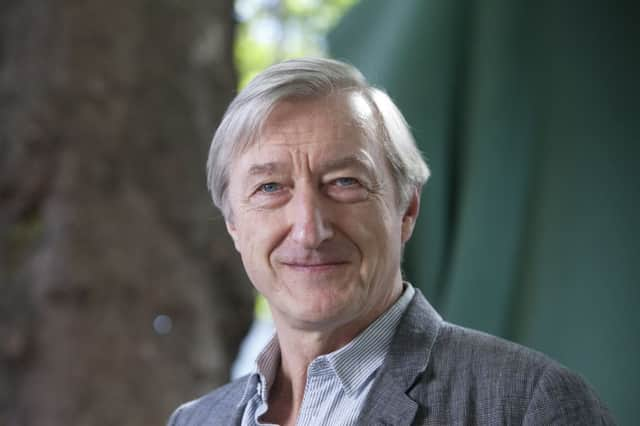Book Festival: Julian Barnes | Peter Stamm | Ray Tallis


Whether speaking or writing, Barnes is almost incapable of producing an inelegant sentence. But yesterday morning Tim Marlow’s expert chairing – the best I’ve seen so far this festival – channelled that natural eloquence into an altogether fascinating discussion of art and writing and writing about art.
It all began, Barnes said, in 1964 when he was 18. In Paris, at the Musée Gustave Moreau near Gare Saint-Lazare – a place nobody had told him about, the old studio of a painter whose work he didn’t know (yet who turned out to be Flaubert’s favourite artist), he started to think his way into paintings for the first time. Going back 50 years later, he was slightly disappointed to discover that, for all his lifetime’s love of painting, his reactions to Moreau hadn’t changed much. “It was like looking again at those essays you might have written aged 18, all those underlinings of meaningful passages and ‘IRONY’ written in the margins – all still true. I felt I should have moved on more.”
Advertisement
Hide AdThe problem with so much modern art, he said, is that the artist’s own narrative has become more important than the work itself. And sometimes that narrative just doesn’t make much sense. Jeff Koonz’s explanation about Puppy, his 15ft dog made out of blue flowers at the Bilboa Guggenheim, sprang to his mind: “It helps you have a dialogue between the organic and the inorganic … whether you want to love or be loved… all these polarities come into play because Puppy sets them up.” “Enough’,” Barnes sighed. “It’s like shooting fish in a barrel.” And so it is – although he still managed to sneak in a wonderful put-down of Andy Warhol (“he is an artist in the sense that Fergie is a Royal”) before he stopped shooting.
At the Royal Academy later this year, Barnes will co-curate the first ever exhibition of Swiss artist Felix Vallotton (1865-1925) in Britain later this year, and he talked engagingly about how even Vallotton’s apparently straightforward narrative paintings open themselves up to radically different interpretations. But it was the ghost of another Swiss artist – Alberto Giocometti – which hung over the preceding event with Swiss novelist Peter Stamm and Scottish writer Karen Campbell.
Stamm revealed that his portrait of his character Hubert, an artist increasingly despairing of the validity of his art, had been heavily influenced by reading of Giacometti’s diaries, in which he expressed similar doubts. Hubert has been asked by his friend Gillian, a TV presenter whose face has been badly smashed up in a car crash, to paint her portrait. Already, you can see, deep questions about identity, damage, recovery and the purpose of art, are swirling. And Vallotton would have been relevant to Karen Campbell’s work too: the Swiss artist, apparently, created paysages composés – put-together landscapes – for which he would mix sketches drawn from different sites. This seems somewhat similar to Kilmacarra, the fictional village in Campbell’s latest novel Rise – essentially, Kilmartin, with its geography and inhabitants changed by her own imagination.
That event was chaired by festival director Nick Barley, who expertly drew out the themes the two novels had in common. Chairing isn’t, it should be pointed out, as easy as it might first appear, even when there are such confluences and commonalities among the writers’ books.
There certainly was that between the latest books by Portuguese journalist Susana Moreira Marques and Ray Tallis, a former professor of geriatric medicine. Both were about death, both sounded highly original, both about the only one thing everyone in the audience will have in common. Marques had been led towards her subject by following a palliative care team around a neglected part of rural Portugal; Tallis, meanwhile, looked back on life from the vantage point of death, seemingly assembling a whole mass of wisdom in the process.
Potentially, at every turn – not least right at the end, when Tallis came close to suggesting that hospitals had a vested interest in providing a slow death – there was something of interest here. The chairing of the event obscured this rather than highlighted it, so I’ll do my best to remedy that. Next time you’re in a bookshop, here are two titles to check out – Now and at the Hour of Our Death and Tallis’s The Black Mirror. I think you’ll find they’re a lot more about life than you’d expect.
david robinson